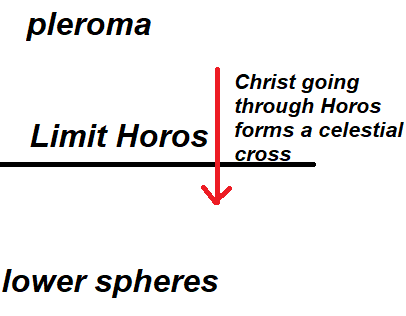The superior Christ extends his energies, stretching himself across Horos. That is actual, that is substance. The stretching forms a figurative cross. That is the symbolism. See the image you yourself created on the last page: that is a perfect example.Giuseppe wrote: ↑Wed Aug 28, 2019 4:06 amYour hypothesis (that the celestial crucifixion in outer space is simply a symbolism meaning the going through Horos) is falsified for two reasons, in essentia:
FIRST REASON: Tertullian himself specifies that the celestial crucifixion in outer space is not symbolism, but "in a substantial though invisible form".
GDon should explain why something by him considered as mere symbolism is said to be, at contrary, "substantial".

But there are no actual crucifiers and no actual crucifixion. Just the superior Christ stretching past Horos (Staurus/boundary/stake/pole).
There is no death of the superior Christ in the text. You've either not read Tertullian on Valentinians' views, or you don't understand it. No actual death, no actual crucifiers, no actual crucifixion.
In Valentinian theology (according to Tertullian), the Demiurge is ignorant of the Pleroma and all that comes from it. It thinks that it alone is God. It has no idea of the superior Christ, much less have the ability to crucify him. Satan comes out of the same process that created the Demiurge, so I assume the same for Satan as well, though Tertullian doesn't specify Valentinian beliefs on that matter.Giuseppe wrote: ↑Wed Aug 28, 2019 4:06 amWho crucified a Christ can only be a satanic being. In Valentinus theology, Satan is the demiurge. Therefore, the demiurge crucified Jesus in outer space. While on the earth, Pilate crucified the Jesus who is the delineation of the celestial Christ crucified in outer space.
We've gone past the point of discussing what is in the text, and gone on to what is in your imagination. I've enjoyed the discussion since it's pushed me to read about Valentinian gnosticism, but it's reached the point that further discussion is not productive. I wish you well Giuseppe, and no doubt I will cross (symbolic) swords with you again soon on the next topic!